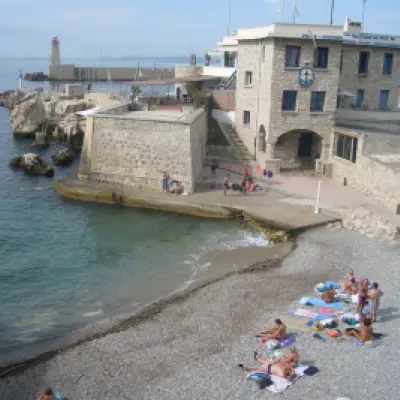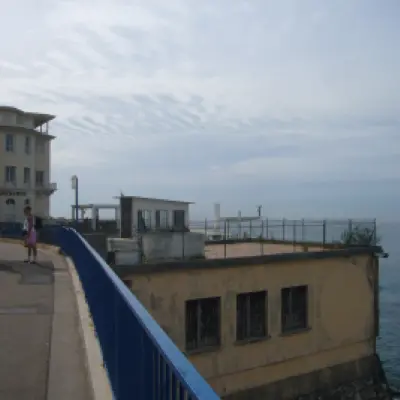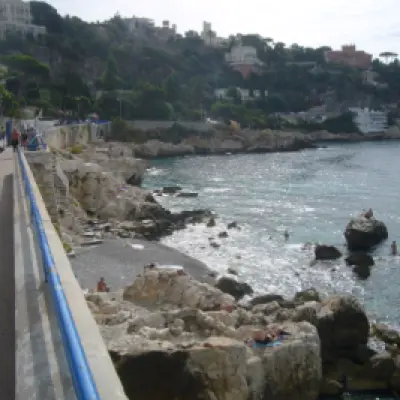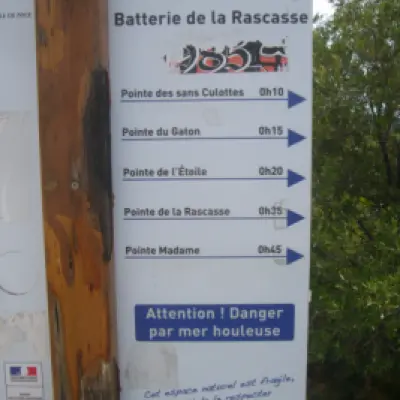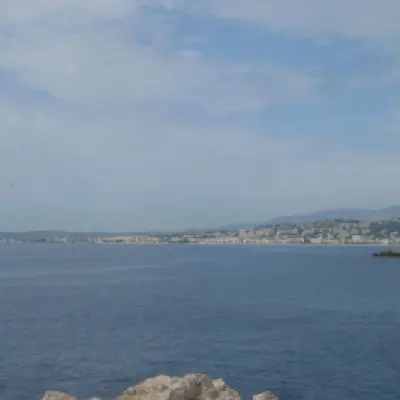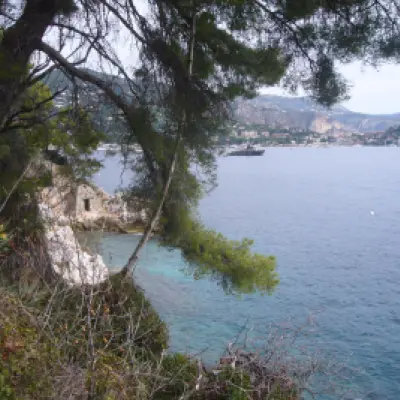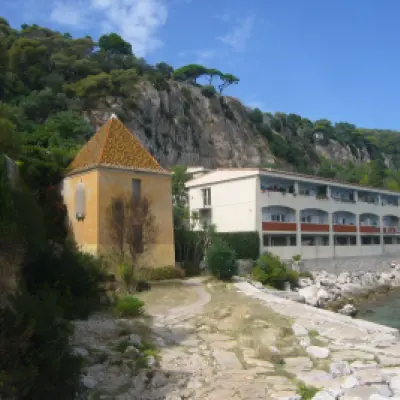Sentier des douaniers Nice-Villefranche
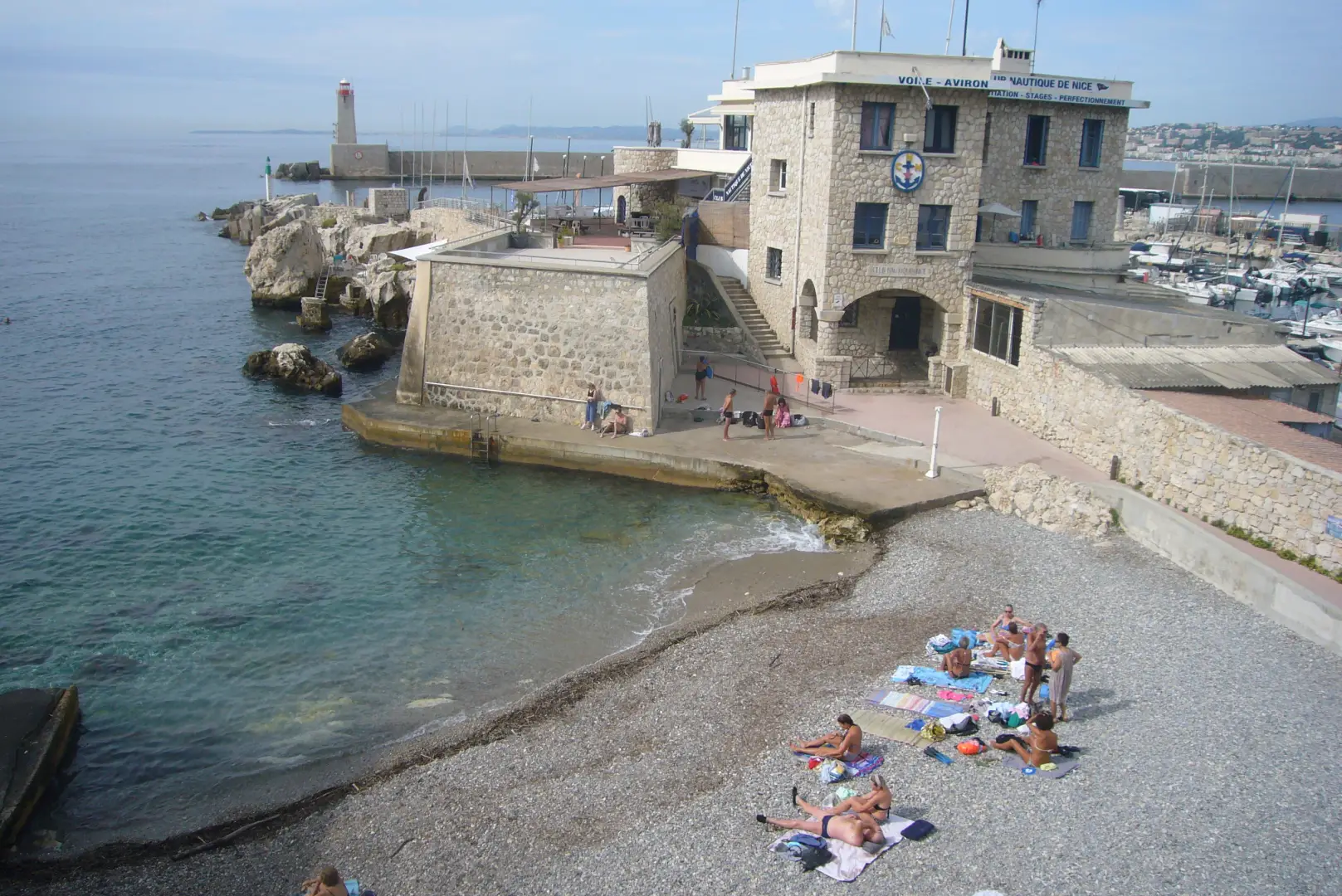
Access
The terminus of tram line 2, which corresponds to the port of Nice (port Lympia)
.Introduction
Tranquil seaside stroll between the centre of Nice and nearby Villefranche (where there is a sandy beach!)
Duration 1.00 - 1.30 h
Description
From the terminal of tram 2 walk towards the eastern side of the harbour, where the typical 'pointus', the colourful wooden boats typical of old fishermen, are stationed, which are now kept alive by various enthusiasts of the sea and local history. At the end of the quay, one reaches an exhibition hall, which was formerly the town's old prison. On the left as we look at the building, a small staircase climbs up to the lower Corniche: the carriage road that follows the coast at sea level. Since it is still in the city, it is called boulevard Franck Pilatte. Marking its beginning is a kiosk selling drinks and especially some local gastronomic specialities, such as pan bagnat and tourte de blette. It is a very popular kiosk and always popular with local fast food aficionados.
You continue east along the pavement and the first characteristic spot you reach is the very chic La Réserve restaurant and the quaint plongeoir (a former diving platform partially converted into a lounge bar). (photo 1) The same name (La Réserve) is also that of a small beach next to the nautical club, a relatively secluded place popular with the locals. (photo 2)
The upstream side of the boulevard alternates between recent constructions and fine belle époque villas, as well as a public garden that hides the Grotte du Lazaret, where evidence of human settlement dating back to prehistoric times has been found. Downstream from the gardens, on the other hand, is what is known as Coco Beach: a collection of rocks and small cobbled open spaces, a den for sunbathers far from the masses of bathers on the Promenade des Anglais. (photo 3).
Here begins our path, which is taken by descending a small staircase and then continuing to the left. The path is a smooth cobblestone, held together by concrete. It follows the contours of the coastline and sometimes rises or falls along small steps. At other times the path seems to disappear into private property, but in reality it bypasses it with cemented walkways smelling of urine (human? dog?) (photo 4)
The path is panoramic both over the open sea and coastal traffic and over the town of Nice, which lies behind us. We continue eastwards to a small villa resembling the prow of a ship. (photo 5) However, the path seems to continue, but in fact after a few hundred metres it ends up against the rocks on a concrete platform, pompously named Plage de la Plateforme. Next to the villa, the direction to take is indicated: to the left, where a staircase of more than 150 steps ascends towards the carriage road, (photo 6), which is reached by crossing a small residential area for a few hundred metres and sweating the impossible in the summer heat.
The boulevard has changed its name and is now called Maurice Maeterlink, named after an early 20th century writer and playwright, who had a sumptuous residence built here, now converted into luxury flats, some of which can be seen from above (especially the pool area). We continue eastwards until we come to an indicative panel (photo 7) which invites us to descend again towards the sea, along an earthen path which skirts a military area and arrives at an old World War II bunker. (photo 8) From here we can take our last glances at the Baie des Anges and the city of Nice, (photo 9) before the path bends towards the Bay of Villefranche. (photo 10)
The first building we encounter in Villefranche is the old 18th century lazaret, which became famous after 1840, when it housed for some time the body of Niccolò Paganini, who had died in Nice, but whom no town wanted to bury in its cemetery, as he was "the devil's hand"! (photo11)
From here, the walk becomes urban, skirting the sea as far as the port, where you have to leave the wall at the height of the harbourmaster's office, as this is the only way down. Recommended visit to the village and its tourist attractions: first of all, the citadel, the old village and its Rue Obscure, a medieval shopping street that is totally underground!
After the old village, the bay continues with the beach, as far as the border with Saint-Jean-Cap-Ferrat. We recommend a long stop and a nice swim on the opposite side of the village, which sunbathes until evening.
There are three options for returning to Nice:
1 - go back the same way in the opposite direction
2 - go up the village to the Corniche and follow it in an east-west direction (beautiful view, but heavy traffic)
3 - from the bottom of the bay, go up a little staircase to the east, along the railway, and then through a quarter of luxurious villas to the junction of the Corniche with the road to Cap-Ferrat and Beaulieu. Return to the Corniche in the opposite direction as far as the bus stop near an abandoned hotel. Return to Nice by city bus No. 15 or suburban bus No. 600
.The trail theoretically goes as far as Menton (except for the crossing of Monaco) and is easy to walk because it follows the coast with practically no significant differences in altitude. Beware of the sun, which burns quite a bit in season, and beware of bad weather (especially wind), which is the only factor that may cause the authorities to close access to the path for safety reasons, given its proximity to the rocks.
The free water refuelling points are only at the start (under the trees in the square above the tram terminal) and at the top of the steps that we will describe, but on the opposite pavement. On arrival at Villefranche there are public toilets at the port with convenient sinks.
.